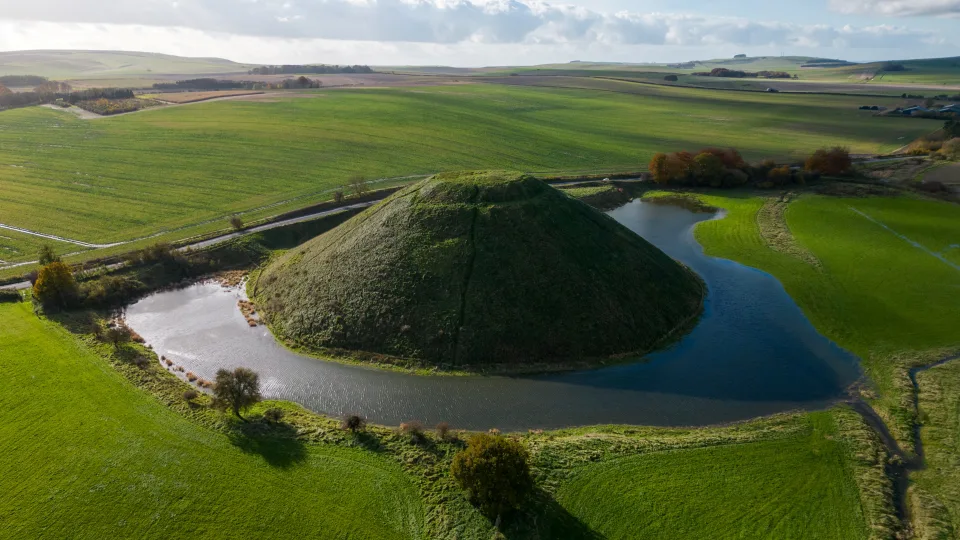Silbury Hill, a 4,000-year-old prehistoric marvel located in Wiltshire, has recently undergone a fascinating transformation due to heavy rainfall. The downpours have given rise to a large horse-shoe shaped moat around the base of this ancient mound, creating a spectacle reminiscent of an ancient fort. As the largest artificial mound in Europe, Silbury Hill continues to perplex archaeologists with its enigmatic origins and purpose.
Standing at 40 meters, Silbury Hill forms an integral part of the Avebury World Heritage Site. Constructed from chalk, the purpose of this monumental mound remains largely unknown. Archaeologists speculate that it was built by hand, requiring a substantial workforce. Tim Daw, a local expert on ancient monuments, suggests that the moat might have been an intentional feature during its construction. He posits that when Silbury Hill was built, the water table was higher, possibly two to five meters more than the present level, resulting in more water in the vicinity.
The ground around the ancient monument has become soft and saturated. (SWNS) (Tom Wren / SWNS)
The Moat's Historical Significance
According to Win Scott, senior properties curator at English Heritage, the moat has been a recurring feature, known to form seasonally and naturally drain away over time. Scott explains that the water accumulation dates back at least 4,000 years and was partly created during the construction of the mound through the digging of turf and chalk. This insight suggests that the moat might have served a purpose related to the construction process or had symbolic significance for the ancient builders.
Weather's Impact on Silbury Hill
The recent moat formation is attributed to heavy rainfall, which is part of a broader weather pattern in the UK. The Met Office reports that the country experienced over a third more rain than the monthly average in October, making it the joint-sixth wettest October on record. Storm Babet, which occurred in mid-October, led to disruptions across the UK, contributing to the wet conditions. The impact of this weather is evident in the formation of the moat around Silbury Hill.
The horseshoe-shaped moat. (SWNS) (Tom Wren / SWNS)
Historical Context and Visitor Accessibility
Daw's suggestion that the original builders might have intended for a moat aligns with the cyclical nature of its formation. Historical records note flooding at the site in 2000, 2007, and 2013. Importantly, these periodic floods do not deter visitors from exploring or accessing the site. Despite the moat's temporary presence, Silbury Hill remains a remarkable testament to ancient engineering and continues to attract those eager to unravel its mysteries.
The recent formation of a moat around Silbury Hill adds another layer of intrigue to an already mysterious archaeological wonder. As researchers and archaeologists continue to explore the site, the seasonal moat serves as a reminder that, even after millennia, Silbury Hill continues to captivate and surprise, offering glimpses into the practices and intentions of its ancient builders. The evolving landscape around this prehistoric monument highlights the intersection of history, weather patterns, and the enduring allure of our ancient past.









